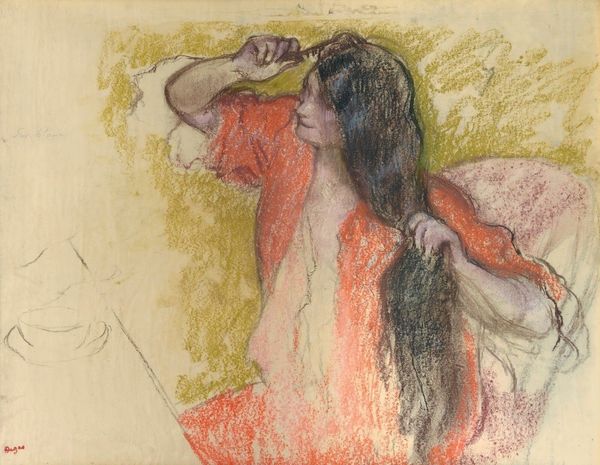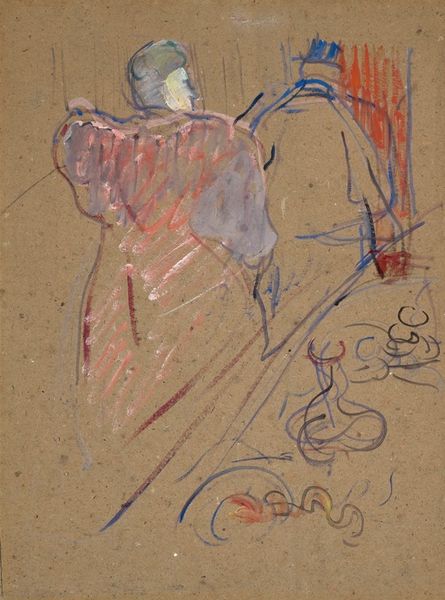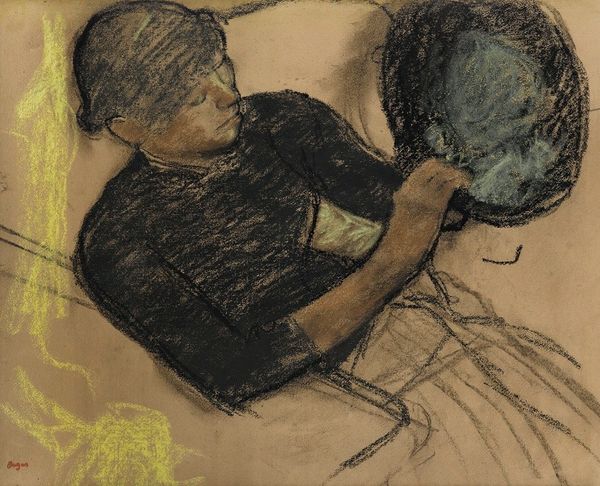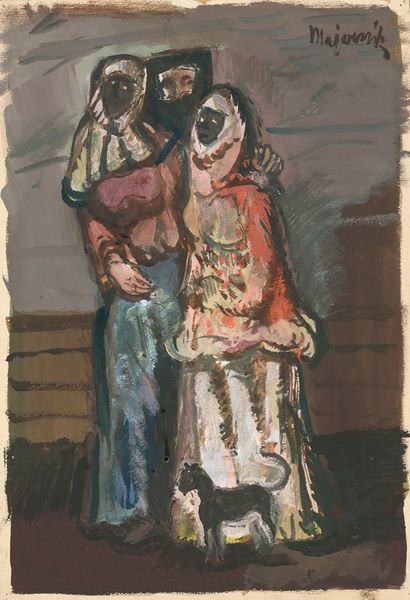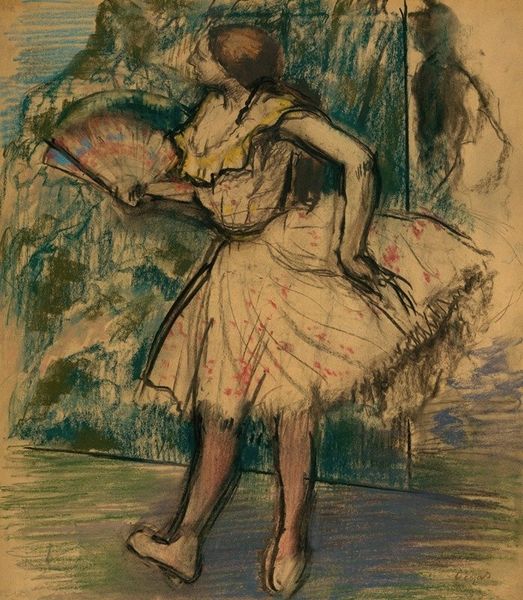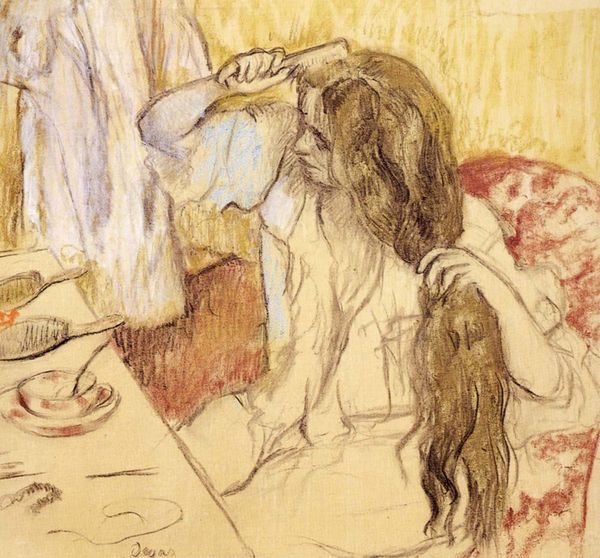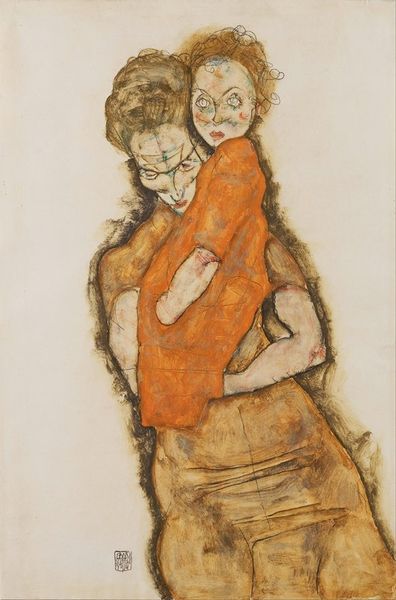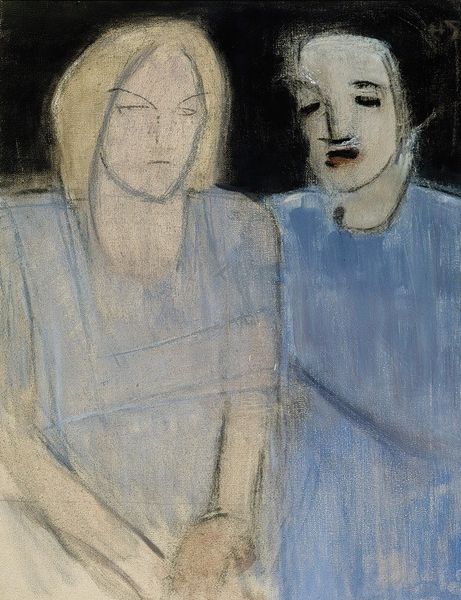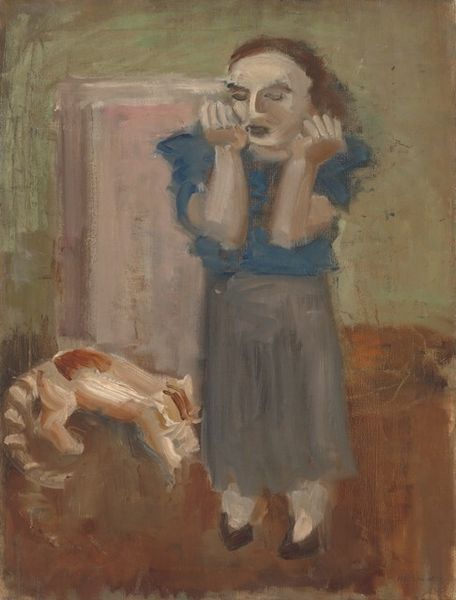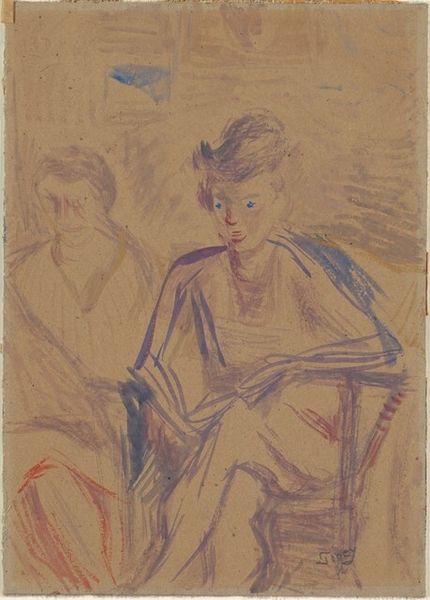
drawing, pastel
#
portrait
#
drawing
#
impressionism
#
genre-painting
#
pastel
Copyright: Public Domain: Artvee
Curator: This pastel drawing by Edgar Degas, created between 1878 and 1880, is entitled "Au Café-Concert, Deux Chanteuses," which translates to "At the Café-Concert, Two Singers." Editor: Wow, there's something instantly captivating about this piece. I'm struck by the soft, almost blurry quality and the way the colors blend together. It feels dreamlike. Like I'm eavesdropping on a memory. Curator: It’s more than just a pretty picture, though. It situates itself within a much larger cultural narrative that exposes the commodification and exploitation of working-class women performers in late 19th-century Paris. The café-concert, a hub of Parisian nightlife, blurred the lines between art, commerce, and social class, simultaneously offering opportunities and preying upon women. Editor: Interesting. I’m getting a sense of their personalities. One of them looks a bit nervous; she is wringing her hands and averting her eyes, almost swallowing her spit; and the other one has a fixed stare. And, oh my, did the singer get that top on sale at a rock bottom price?! She got it. I can feel it. Curator: The deliberate artistic choice not to highlight idealised images is important. This approach challenges patriarchal social hierarchies and gender expectations that controlled the lives of women. Degas provides us with insights into the multifaceted realities, whether challenging class constraints or calling for recognition. Editor: Well, putting the theoretical aside for a moment. Those rapid strokes of blue and gold--those colors—they suggest there's a vibrancy there beneath it all, beneath whatever hardships they faced. It makes the work, if you allow me to say so, sing, don't you think? Curator: Absolutely, there’s an undeniable beauty. Considering the socio-economic context, one is faced with confronting the contradictions between female agency and constraints in artistic depiction, thereby expanding comprehension regarding the intricate relationship among the female roles, visual imagery, and broader societal influences within a historical perspective. Editor: Hmm... Yes, yes indeed. I am glad Degas did not paint us two flawless dolls because what he delivered here feels true. That's how these singers may be seen at that precise time in that very spot and I'm left wanting to learn what becomes of them. What were their stories beyond the stage lights. Curator: Indeed. Thank you for that insightful perspective. By bridging art history with broader cultural, social, and political dimensions, we appreciate artworks’ rich and multifaceted dimensions. Editor: Thanks, it’s nice to remember, from time to time, to engage with art on both an intuitive and informed level. I appreciate it.
Comments
No comments
Be the first to comment and join the conversation on the ultimate creative platform.

